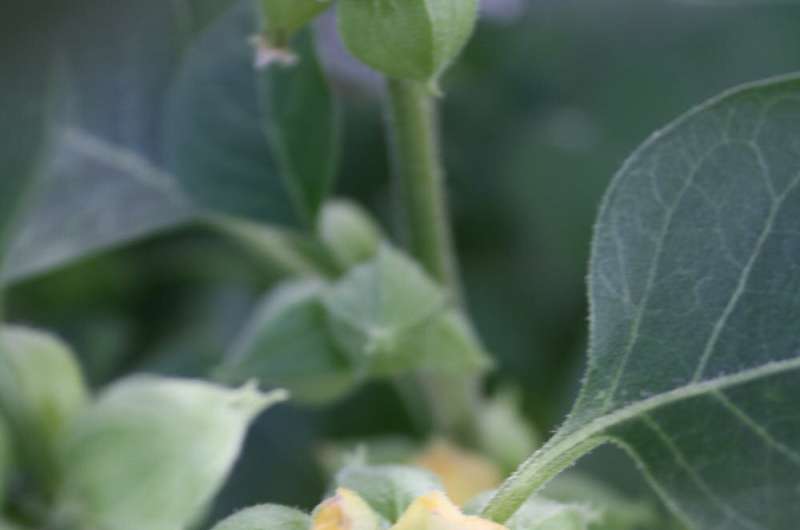Dwindling tropical rainforests mean lost medicines yet to be discovered in their plants

Growing up in Tanzania, I knew that fruit trees were useful. Climbing a mango tree to pick a fruit was a common thing to do when I was hungry, even though at times there were unintended consequences. My failure to resist consuming unripened fruit, for example, caused my stomach to hurt. With such incidents becoming frequent, it was helpful to learn from my mother that consuming the leaves of a particular plant helped alleviate my stomach pain.
This lesson helped me appreciate the medicinal value of plants. However, I also witnessed my family and neighboring farmers clearing the land by slashing and burning unwanted trees and shrubs, seemingly unaware of their medicinal value, to create space for food crops.
But this lack of appreciation for the medicinal value of plants extends beyond my childhood community. As and land is cleared for agriculture, most of the concerns have focused on the drop in global oxygen production if swaths of the forests disappear. But I'm also worried about the loss of potential medicines that are plentiful in forests and have not yet been discovered. Plants and humans also share many genes, so it may be possible to test various medicines in plants, providing a new strategy for drug testing.
, I am because of the potential to develop more resilient and nutritious crops. I am also interested in plant biodiversity because of its . About 80% of the world population , such as and , and to .
Future medicines may come from plants
One of the greatest challenges in fighting diseases is the emergence of drug resistance that renders treatment ineffective. in the fight against malaria, , and . It is likely that drug resistance will emerge with other diseases, forcing researchers to find .
Plants are a rich source of new and diverse compounds that may prove to have medicinal properties or serve as building blocks for . And, as tropical rainforests are the largest reservoir of diverse species of plants, preserving biodiversity in tropical forests is important to ensure the supply of .
Plants and new cholesterol-lowering medicines
The goal of my own research is to understand how . Humans produce one sterol, called cholesterol, which has functions including formation of testosterone and progesterone—hormones essential for normal body function. By contrast, plants produce a diverse array of sterols, including sitosterol, stigmasterol, campesterol, and cholesterol. These sterols are used for plant growth and defense against stress but also serve as such as those found in the Indian Ayurvedic medicinal plant, ashwagandha.
Humans produce cholesterol through a string of genes, and that are the target of . to make their sterols. In fact, the sterol production systems in plants and humans are so similar that medicines used to treat high cholesterol in people also block sterol production in plant cells.
I am fascinated by the similarities between how humans and plants manufacture sterols, because identifying new medicines that block sterol production in plants might lead to medicines to treat high cholesterol in humans.
New medicines for chronic and pandemic diseases
An example of a gene with medical implications that is present in both plants and humans is NPC1, which controls the transport of cholesterol. However, the protein made by the NPC1 gene is also the infects cells. Since , they represent potential systems for developing and testing new medicines to block Ebola.
This will involve identifying new chemical compounds that interfere with . This can be done by extracting chemical compounds from plants and testing whether they can effectively prevent the Ebola virus from infecting cells.
There are many conditions that might benefit from plant research, including , and even infectious diseases , all of which have significant global impact. To treat high cholesterol, are used. . However, not all patients must be developed.
Tropical rainforests are medicine reservoirs
The need for new medicines to is dire. A rich and diverse source of chemicals can be . With knowledge of genes and enzymes that make medicinal compounds in native plant species, scientists can apply genetic engineering approaches in a sustainable manner.
Tropical rainforests house , but this diversity faces significant .
To help students in my genetics and biotechnology class appreciate the value of plants in medical research, I refer to findings from . My goal is to help them recognize that many cellular processes are similar between plants and humans. My hope is that, by learning that plants and animals share similar genes and metabolic pathways with health implications, my students will value plants as a source of medicines and become advocates for preservation of plant biodiversity.
Provided by The Conversation
This article is republished from under a Creative Commons license. Read the .![]()



















